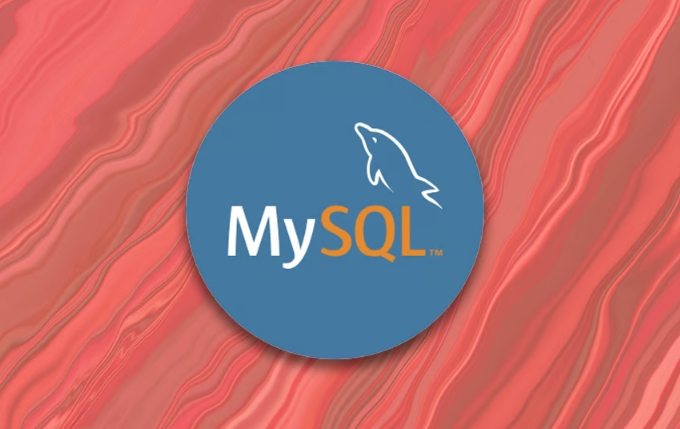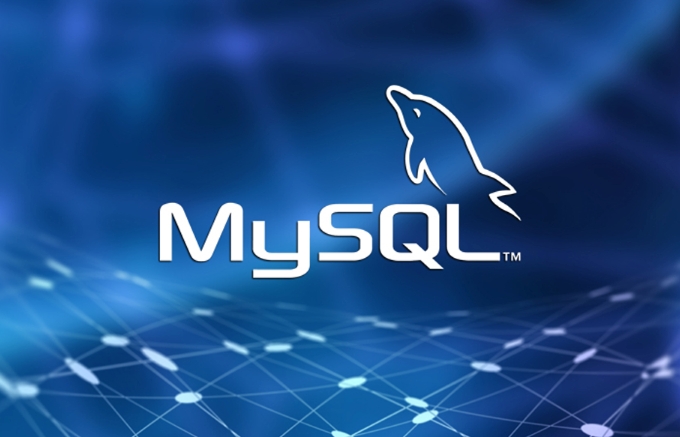The steps to upgrade MySQL server to the new version include: 1. Confirm the current version and target version, use the stable version and check application compatibility; 2. Completely back up the data, use mysqldump or physical backup to ensure consistency; 3. Select the upgrade method, such as system package manager, binary package or source code installation; 4. Check the log after the upgrade, run mysql_upgrade, and optimize configuration and permissions. The entire process needs to be operated with caution to ensure that the service is stopped before performing the upgrade action, and finally restart the service and verify that the function is normal.

Upgrading MySQL server to a new version is usually for better performance, security updates, or new features. But if you haven't done it a few times, you may find it a bit troublesome. In fact, as long as the steps are clear and the backup is in place, the whole process is not complicated.

Confirm the current version and target version
Before you start, figure out which version you are currently running. You can use the following command to view:

mysql -V
After confirming the current version, decide which version to upgrade to. Generally speaking, it is recommended to choose a stable version (GA) instead of a development version or a beta version. For example, upgrading from 5.7 to 8.0 is a common choice.
Also, be careful whether the new version is compatible with your app. Some large versions of upgrades will bring problems such as configuration file format changes, default parameter adjustments, and even some functions being deprecated.

Backup data is a must
This step cannot be skipped. Even if it is just a small version upgrade, there may be problems. The safest way is to do a complete database backup, including all databases and MySQL system tables.
You can use mysqldump for logical backup:
mysqldump --all-databases --single-transaction --routines --events --triggers > backup.sql
You can also copy the data directory directly (physical backup), but pay attention to permissions and consistency.
If you use the master-slave architecture, remember to stop writing first to ensure that the data is consistent before backing up.
Choosing upgrade method
MySQL provides several common upgrade methods, which one depends on your environment and needs.
- Use the system package manager : For example, you can use
apton Ubuntu,yumordnfon CentOS. This method is suitable for simple and quick upgrades, but you may not necessarily get the latest version. - Manually install the binary package : Download the official tar package and replace the old executable files and library files. Suitable for people who have a certain ability to control the server.
- Source code compilation and installation : suitable for scenarios with customization needs, but the operation is complicated and time-consuming.
No matter which method is used, you must pay attention to stopping the MySQL service before performing operations to avoid data corruption or configuration conflicts.
Upgraded inspection and optimization
After the upgrade is completed, don't rush to go online. Start MySQL first and check if there is any error message in the log. Especially if you upgrade a large version, such as from 5.7 to 8.0, you need to run mysql_upgrade to repair the system table:
mysql_upgrade
Then restart the MySQL service to allow the changes to take effect.
There are also a few things you can do:
- Check whether the slow query log is on and whether it is necessary to adjust it
- Update user permissions (some default permission structures may change)
- Adjust the configuration file and enable new features supported by the new version
Basically that's it. As long as the preliminary preparation is sufficient, the upgrade process will not be too difficult, but many details are easy to ignore, especially version compatibility and permission issues, which are worth spending more time confirming.
The above is the detailed content of Upgrading MySQL Server to a Newer Version. For more information, please follow other related articles on the PHP Chinese website!

Hot AI Tools

Undress AI Tool
Undress images for free

Undresser.AI Undress
AI-powered app for creating realistic nude photos

AI Clothes Remover
Online AI tool for removing clothes from photos.

Clothoff.io
AI clothes remover

Video Face Swap
Swap faces in any video effortlessly with our completely free AI face swap tool!

Hot Article

Hot Tools

Notepad++7.3.1
Easy-to-use and free code editor

SublimeText3 Chinese version
Chinese version, very easy to use

Zend Studio 13.0.1
Powerful PHP integrated development environment

Dreamweaver CS6
Visual web development tools

SublimeText3 Mac version
God-level code editing software (SublimeText3)

Hot Topics
 Performing logical backups using mysqldump in MySQL
Jul 06, 2025 am 02:55 AM
Performing logical backups using mysqldump in MySQL
Jul 06, 2025 am 02:55 AM
mysqldump is a common tool for performing logical backups of MySQL databases. It generates SQL files containing CREATE and INSERT statements to rebuild the database. 1. It does not back up the original file, but converts the database structure and content into portable SQL commands; 2. It is suitable for small databases or selective recovery, and is not suitable for fast recovery of TB-level data; 3. Common options include --single-transaction, --databases, --all-databases, --routines, etc.; 4. Use mysql command to import during recovery, and can turn off foreign key checks to improve speed; 5. It is recommended to test backup regularly, use compression, and automatic adjustment.
 Handling NULL Values in MySQL Columns and Queries
Jul 05, 2025 am 02:46 AM
Handling NULL Values in MySQL Columns and Queries
Jul 05, 2025 am 02:46 AM
When handling NULL values ??in MySQL, please note: 1. When designing the table, the key fields are set to NOTNULL, and optional fields are allowed NULL; 2. ISNULL or ISNOTNULL must be used with = or !=; 3. IFNULL or COALESCE functions can be used to replace the display default values; 4. Be cautious when using NULL values ??directly when inserting or updating, and pay attention to the data source and ORM framework processing methods. NULL represents an unknown value and does not equal any value, including itself. Therefore, be careful when querying, counting, and connecting tables to avoid missing data or logical errors. Rational use of functions and constraints can effectively reduce interference caused by NULL.
 Aggregating data with GROUP BY and HAVING clauses in MySQL
Jul 05, 2025 am 02:42 AM
Aggregating data with GROUP BY and HAVING clauses in MySQL
Jul 05, 2025 am 02:42 AM
GROUPBY is used to group data by field and perform aggregation operations, and HAVING is used to filter the results after grouping. For example, using GROUPBYcustomer_id can calculate the total consumption amount of each customer; using HAVING can filter out customers with a total consumption of more than 1,000. The non-aggregated fields after SELECT must appear in GROUPBY, and HAVING can be conditionally filtered using an alias or original expressions. Common techniques include counting the number of each group, grouping multiple fields, and filtering with multiple conditions.
 Paginating Results with LIMIT and OFFSET in MySQL
Jul 05, 2025 am 02:41 AM
Paginating Results with LIMIT and OFFSET in MySQL
Jul 05, 2025 am 02:41 AM
MySQL paging is commonly implemented using LIMIT and OFFSET, but its performance is poor under large data volume. 1. LIMIT controls the number of each page, OFFSET controls the starting position, and the syntax is LIMITNOFFSETM; 2. Performance problems are caused by excessive records and discarding OFFSET scans, resulting in low efficiency; 3. Optimization suggestions include using cursor paging, index acceleration, and lazy loading; 4. Cursor paging locates the starting point of the next page through the unique value of the last record of the previous page, avoiding OFFSET, which is suitable for "next page" operation, and is not suitable for random jumps.
 Calculating Database and Table Sizes in MySQL
Jul 06, 2025 am 02:41 AM
Calculating Database and Table Sizes in MySQL
Jul 06, 2025 am 02:41 AM
To view the size of the MySQL database and table, you can query the information_schema directly or use the command line tool. 1. Check the entire database size: Execute the SQL statement SELECTtable_schemaAS'Database',SUM(data_length index_length)/1024/1024AS'Size(MB)'FROMinformation_schema.tablesGROUPBYtable_schema; you can get the total size of all databases, or add WHERE conditions to limit the specific database; 2. Check the single table size: use SELECTta
 Setting up asynchronous primary-replica replication in MySQL
Jul 06, 2025 am 02:52 AM
Setting up asynchronous primary-replica replication in MySQL
Jul 06, 2025 am 02:52 AM
To set up asynchronous master-slave replication for MySQL, follow these steps: 1. Prepare the master server, enable binary logs and set a unique server-id, create a replication user and record the current log location; 2. Use mysqldump to back up the master library data and import it to the slave server; 3. Configure the server-id and relay-log of the slave server, use the CHANGEMASTER command to connect to the master library and start the replication thread; 4. Check for common problems, such as network, permissions, data consistency and self-increase conflicts, and monitor replication delays. Follow the steps above to ensure that the configuration is completed correctly.
 Implementing Transactions and Understanding ACID Properties in MySQL
Jul 08, 2025 am 02:50 AM
Implementing Transactions and Understanding ACID Properties in MySQL
Jul 08, 2025 am 02:50 AM
MySQL supports transaction processing, and uses the InnoDB storage engine to ensure data consistency and integrity. 1. Transactions are a set of SQL operations, either all succeed or all fail to roll back; 2. ACID attributes include atomicity, consistency, isolation and persistence; 3. The statements that manually control transactions are STARTTRANSACTION, COMMIT and ROLLBACK; 4. The four isolation levels include read not committed, read submitted, repeatable read and serialization; 5. Use transactions correctly to avoid long-term operation, turn off automatic commits, and reasonably handle locks and exceptions. Through these mechanisms, MySQL can achieve high reliability and concurrent control.
 Handling character sets and collations issues in MySQL
Jul 08, 2025 am 02:51 AM
Handling character sets and collations issues in MySQL
Jul 08, 2025 am 02:51 AM
Character set and sorting rules issues are common when cross-platform migration or multi-person development, resulting in garbled code or inconsistent query. There are three core solutions: First, check and unify the character set of database, table, and fields to utf8mb4, view through SHOWCREATEDATABASE/TABLE, and modify it with ALTER statement; second, specify the utf8mb4 character set when the client connects, and set it in connection parameters or execute SETNAMES; third, select the sorting rules reasonably, and recommend using utf8mb4_unicode_ci to ensure the accuracy of comparison and sorting, and specify or modify it through ALTER when building the library and table.






